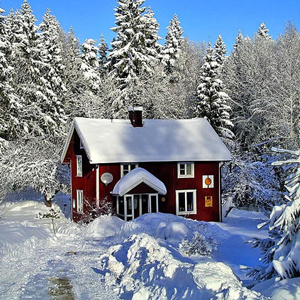As Winter Returns, It’s Time For Winter Moths
By Chris Williams on March 16, 2013.
 It was full-fledged winter just a couple of days ago with cold temperatures and snow. Then overnight, the high winds, heavy rain, and fog pretty much wiped everything out! Ugh, what’s a winter lover to do except hope things improve for February and March.
It was full-fledged winter just a couple of days ago with cold temperatures and snow. Then overnight, the high winds, heavy rain, and fog pretty much wiped everything out! Ugh, what’s a winter lover to do except hope things improve for February and March.
I’m intrigued by the Winter moth’s appearance on the scene in New England in recent years. Even though I’m an entomologist, I have to admit I don’t know too much about them. Apparently, I’m not alone. “Never heard of them before” or “I don’t even know what it is.” (Quote from a New England Apple Assoc. member) Perhaps you are the same. Great then! We’ll all learn together.
Winter moth is a potentially serious defoliator that was introduced to North America from Europe approximately 80 years ago. It is currently established in coastal provinces of eastern and western Canada, Oregon, Washington, and now occurs in coastal areas of New England as well. Its scientific name is Operopthera brumata and it belongs to the family Geometridae. You may be familiar with this family more due to the caterpillars than from the adults which are often very drab in color. If you’ve ever seen an ‘inch’ worm or a ‘looper’ caterpillar, now you know the family it belongs to.
Winter moth is very unique in that the larva completes it’s development by early summer and then remains in it’s cocoon until emerging as an adult in late November and December. Female moths are wingless and will crawl up on host tree species waiting for males to mate with. Male moths will fly in search of females during evenings when temperatures are in the 30s’ or warmer and are also attracted to exterior lighting. After mating, female moths will deposit eggs on tree bark or other protected areas for the next generation in early spring. After this task is complete, adult moths then die.
Why is Winter moth a concern in New England?
As with any introduced species, the lack of natural controls (parasites and predators) combined with a suitable food source can spell real trouble. Winter moth attacks many different tree species including ash, maple, oak, basswood, and even some species of spruce. Apple and blueberry growers are also concerned about this pest not only because of defoliation (on apple) but because it attacks fruit buds too causing reduced production.
A species of parasitic fly (Cyzenis albicans) has been shown to be a fairly effective at controlling winter moth in some of the aforementioned areas, but research has only recently begun on its potential effectiveness in New England. Some researchers have estimated mortality rates as high as 40 percent in certain stands of red oak in Canada.
Forest entomologists and fruit growers alike will be keeping tabs on this insect for many years to come.
Photo credit: Unitopia / Foter.com / CC BY-NC-ND